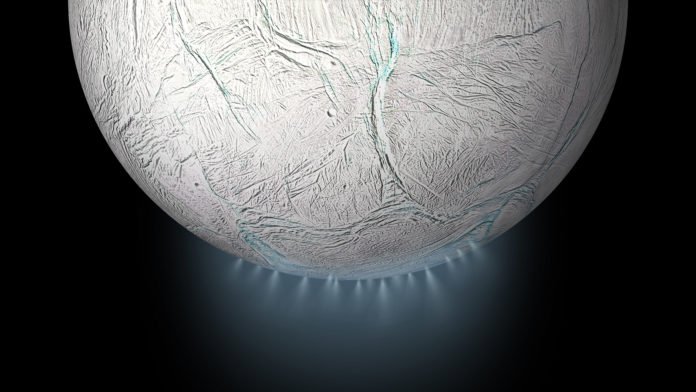Recent research from NASA’s Cassini mission has given a new insight on Enceladus, Saturn’s icy, ocean-bearing moon. Researchers have found evidence that the moon’s spin axis has reoriented.
Examining the moon’s features, the team showed that Enceladus appears to have tipped away from its original axis by about 55 degrees. This is more than halfway toward rolling completely onto its side. The reorientation, according to the researchers, is possibly due to a collision with a smaller body, such as an asteroid.
The area around the icy moon’s current south pole is a geologically active region. Here long, linear fractures referred to as tiger stripes slice across the surface. In 2005, Cassini discovered that jets of water vapor and icy particles spray from the tiger stripe fractures.

Source: NASA
Either caused by an impact or some other process, researchers think the disruption and creation of the tiger-stripe terrain contributed to the redistribution of Enceladus’ mass. Thus, making the moon’s rotation unsteady and wobbly. The rotation would have eventually stabilized, likely taking more than a million years. By the time the rotation settled down, the north-south axis reoriented to pass through different points on the surface. Researchers call this mechanism “true polar wander.”
The polar wander idea helps to explain why Enceladus’ modern-day north and south poles appear quite different. The moon’s original poles would have looked more alike before the event that caused Enceladus to tip over and relocate the disrupted tiger-stripe terrain to the moon’s south polar region.
The results, published in the online edition of the journal Icarus on April 30, 2017 give a detailed description of the cause and effect.

























